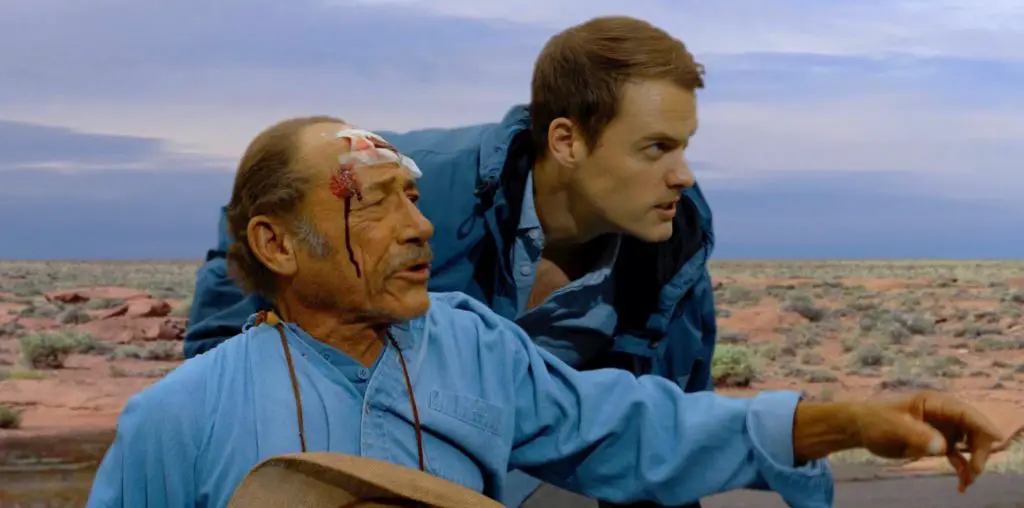
Seventy years ago, the Academy of Motion Picture Arts and Sciences (AMPAS) presented an honorary Academy Award to Rey Scott “for his extraordinary achievement in producing ‘Kukan,’ the film record of China’s struggle, including its photography with a 16mm camera under the most difficult and dangerous conditions.” Scott became the first American filmmaker to receive Oscar recognition for the creation of a feature-length documentary; the following year, AMPAS started an awards category specifically for this genre.
At the time of its release, “Kukan” (subtitled “The Battle Cry of China”) was considered one of the most important films in circulation. The New York Times’ editorial board went out of its way to praise its depiction of the Chinese struggle against Japanese aggression in World War II, while President Franklin D. Roosevelt viewed the film in a private White House screening. But after the war, “Kukan” disappeared from sight. The film was never made available for television broadcasting, nor was it ever presented in home entertainment formats. Indeed, “Kukan” vanished so thoroughly that AMPAS – unable to find any extant print – was forced to list the production as a lost film.
Mercifully, the long-missing “Kukan” has been found. Hawaiian-based filmmaker Robin Lung located the last known extant copy of “Kukan” – a battered 16mm print – and has delivered it to AMPAS for restoration. I have been fortunate to have the very rare privilege of screening the pre-restored print of “Kukan” – the first time in nearly 70 years that a critic has seen the documentary – and it is no exaggeration to say that the rediscovery of “Kukan” is one of the most important events in the history of film preservation.
Scott was a St. Louis-born journalist who was employed by London’s Daily Telegraph to cover the Japanese military aggression in China. Thanks to the influential guidance of the Hawaiian-born Chinese-American writer and actress Li Ling-Ai, Scott sought to create a film record of wartime China.
In many ways, Scott was fighting his own war – the majority of Americans obsessed over the European conflict and showed no interest in what was happening across the Pacific. Although he had no experience as a filmmaker and no guarantee that his footage would ever make it into theaters, Scott persevered with this project. Shooting his footage with 16mm Kodachrome film, Scott captured an invaluable record of Chinese culture at one of the most crucial points in the nation’s history. And, in the process, he also changed the non-fiction film genre forever.
“Kukan” offers an extraordinarily progressive view of the Chinese culture. Actually, make that Chinese “cultures,” as Scott went to great lengths to explain how China was not a vast homogenous land, but was a multi-ethnic and multi-religious melting pot. In the film, he included segments relating to the Miao people from the mountains of Guizhou, the Islamic faithful of Lanzhou, Tibet’s Buddhist lamas, the nomadic tribes that roamed the Gobi Desert, and the people of Han and Manchu heritage. This was the first U.S. film to clearly identify China’s distinctive populations and to provide a respectful view of Asian religions.
“Kukan” goes to great lengths to record the heroic efforts of the Chinese people to maintain their ongoing war against the Japanese aggressors. From the extraordinary engineering feat of the Burma Road to the rickety rafts used to ferry supplies across rivers where bridges were destroyed, the display of tenacity by the Chinese is remarkable.
Yet “Kukan” finds a China that is at odds with itself: a nation where cosmopolitan cities were situated alongside primitive villages that appear to have seen very little change over the centuries. One could assume that China’s seemingly disorganized response to the Japanese invasion was a reflection of the country’s inability to fully bring itself into the modern world and establish of coherent national identity.
“Kukan” comes to a thunderous climax with footage of Japanese bombers dropping an estimated 200 tons of explosives across the defenseless wartime capital of Chongqing in August 1940. Scott’s color footage first finds the Japanese air force as blurry white spots in the clear summer sky while the city’s residents calmly leave their homes and jobs and evacuate to shelters. The film then follows the unimaginable horror as bomb after bomb slowly reduces the city to fire and rubble. While “Kukan” avoids filming the casualties of war, it offers a heartbreaking vision of the aftermath of the attack: ill-equipped firefighters join with bucket-carrying civilians to contain the inferno, while survivors slowly gather in the streets after the Japanese airplanes disappear from view.
If there is a flaw to “Kukan,” it would come in Scott’s wall-to-wall narration (the Chinese people never speak for themselves) and his habit of turning up in his footage (that’s Scott in the photo on this page). But by today’s self-promoting standards, Scott’s intrusions are easily forgivable.
In many ways, “Kukan” was the turning point of the non-fiction film genre. Before Scott’s film was presented, feature-length non-fiction films were relatively few in number and limited to either political propaganda or travelogue-style considerations of distant cultures. “Kukan” avoided the agitprop and exotica that dominated the genre by presenting an honest and objective portrait of a nation living under the threat of bombs and bullets. To view “Kukan” is to see where the documentary format evolved into a mature art form.
Scott, sadly, created no further films. In World War II, he joined the U.S. Army and served as John Huston’s cameraman for the government-produced “Report from the Aleutians,” but poor health cut disrupted his military service. After the war, he abandoned filmmaking and moved to Florida to concentrate on running a photographic studio. He died in 1992, and his passing was mostly ignored by the film industry that once awarded him its highest tribute.
There is no schedule regarding when AMPAS will be able to present a fully restored “Kukan.” Hopefully, its return will come sooner rather than later. Simply put, “Kukan” is one of the most important non-fiction films of all time, and its absence for too many years created an inconceivable void in the understanding of film history.



Wow! What a beautiful article. Rey Scott was my grandfather and this really is well written encompassing the whole story. Exciting to learn about the interest surrounding the film too. I hope Robin and I , can bring this powerful story (and film) back into todays light.
P.S. I am currently doing a large body of work as mixed media paintings surrounding this film, using never seen before film strips and images from his personal photo collection. Check a few out on my website at http://www.michellescottart.com. Some the process will also be featured in Robin’s documentary film ” Finding Kukan”.
P.S. A documentary on the history of “Kukan” is currently in production, via Robin Lung. You can learn more about it at http://findingkukan.com/
Film fans who’d like to know more about this story can check out the website for the documentary in progress FINDING KUKAN at http://findingkukan.com
Note that the narration in KUKAN is written in first person by Scott but delivered by a professional narrator (Niles Welch). The heavy use of narration and music in the film is a reminder that in those days sync sound had not been invented yet and recording sound along with video was a very cumbersome process (especially for a lone cameraman traveling in war-torn China).